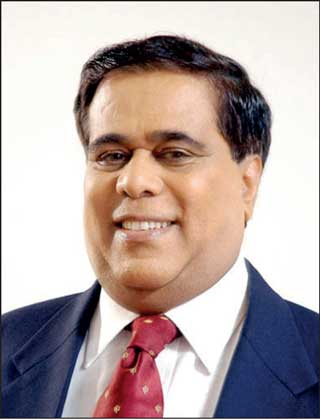Wednesday Jan 14, 2026
Wednesday Jan 14, 2026
Friday, 5 November 2021 00:00 - - {{hitsCtrl.values.hits}}
|
 |
| Labour Minister Nimal Siripala wants to create a pension scheme for the private sector
|
Minister Nimal Siripala is proposing a private sector pension scheme and an insurance scheme to cover employees who lose employment, according to a news item.
Globally, final salary pension schemes are on the decline. In most local companies pensions are now closed to new employees joining and some are closing to employees already in the scheme. These schemes will continue their progression from a core employee benefit to a complex and risky financial liability for a company. The serious problems faced by financial institutions is a good example.
Managing these liabilities creates little upside opportunity for companies but instead poses significant financial risks and ties up precious management time. For some, the Pension could be many years from now, while for others, it will be in the nearer future.
Insurance
Many insurers, who possess built-in long term fund/asset management capabilities are seeking to acquire these liabilities from organisations and are driving a growing market in accelerated settlements.
In Sri Lanka, apart from some banks, very few companies have their own pension schemes. Many companies no longer consider their company final salary pension scheme as a key part of their HR strategy. The cradle to grave employment philosophy is not financially viable and does not work for every employee – certainly not for millennials and Gen-Z. In fact some HR experts are saying it’s time to disrupt the cradle to grave HR strategy, given the rapidly changing business environment that requires new and evolving skills. 
The sentiment is that the final salary pensions ceased being a core employee benefit long time ago; particularly for new and younger employees, and that the pension scheme is a risky and uncertain millstone around the company’s neck. Therefore pension schemes are closed to many new employees, with many now even attempting to close the scheme to existing employee members through buy back schemes. Many financial institutions are leading the way given that many of the pension schemes have become a big liability.
Challenges
In any pension scheme, according to a top fund manager the return on investment, inflation and mortality/longevity are the top three risks any pension schemes will face. Therefore one needs to take a closer look at some of the metrics behind these risks and how they might affect a pension plan:
A) Interest rates: The assets of a pension scheme may not perform in line with the expected assumptions and may also do not match changes in the size of the liabilities over time as interest rates vary at different durations. This creates a risk that in the future the investments either outperform or underperform relative to the liabilities and assumptions. In a typical pension scheme assets are not closely matched to liabilities.
B) Inflation: For most pension schemes, a large proportion of pension benefits are linked to the inflation rate. If future inflation is higher than anticipated, then the cost of providing benefits will also be higher. However, the overall impact on the schemes’ finances will depend to a large extent on the inflation matching provided by the scheme assets.
C) Life’s duration is the number one risk in pension schemes and also the most difficult risk to control. Therefore longevity risk must be uppermost in the minds of the promoters as a problem area for any proposed scheme. During the past century, longevity has been improving steadily thanks to medical advances and improvements in the standard of living.
Alternative solutions
Considering the above, it may be prudent for the government to study long term funding options and the risks associated with managing a pension scheme for the private sector in consultation with the private sector because any scheme that is launched must not fundamentally alter the rights of workers over their current benefits (Gratuity and ETF) or the long-term benefit of receiving a lump sum at 55 i.e. EPF. A defined benefit contributory pension scheme may be a viable option given that thousands of people retire each year at 55 with nothing in their hands and are a liability to the State.
However, for a start the private sector could benefit a lot through a form of an unemployment benefit scheme – again with characteristics of a contributory defined benefit scheme, which the current system can fund. The key benefit would be that the economy will benefit from maintaining aggregate demand, in high and low unemployment periods. That would help companies to restructure and become competitive. This is win-win frame, for both employees and employers of the private sector.
Therefore, in the final analysis, securing the retirement future and the defined unemployment benefits of those blue collar workers who do not have the privilege of hefty bonuses, big EPF balances and long-term options, is certainly the way forward. However what the Government needs to do is work out a scheme that is viable and does not fundamentally alter the current rights or lead to more and more people evading EPF and finally make the private sector uncompetitive to compete in overseas markets.
(The writer is a former Chairman of the Employees Trust Fund Board of Sri Lanka.)